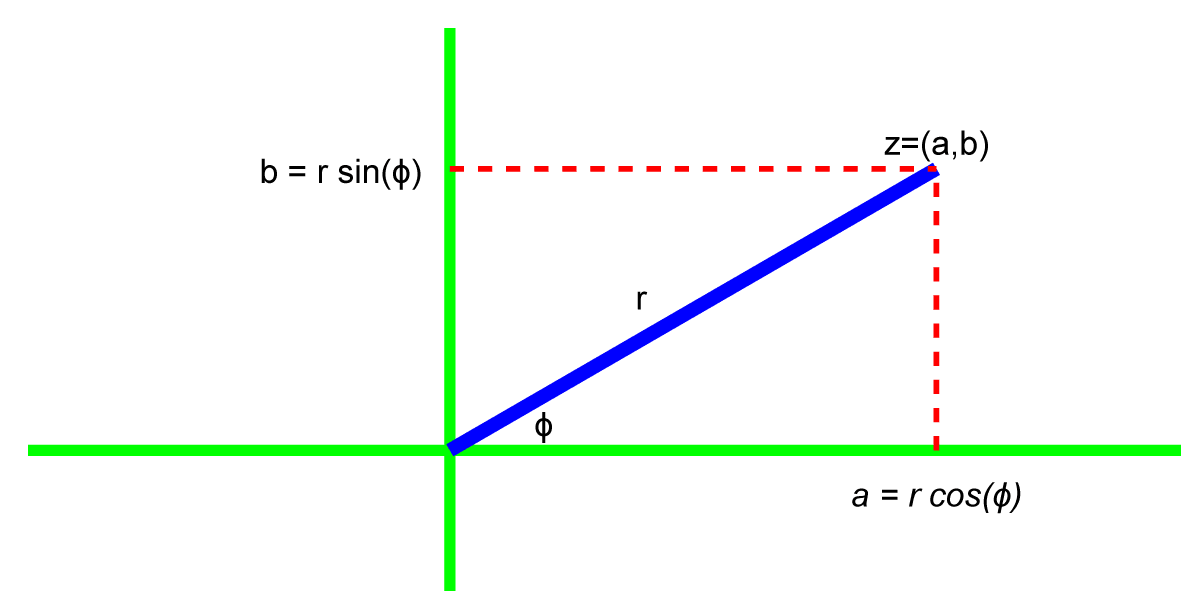Complex Numbers
June 2, 2021
Back to: Fundamentals of Signal Processing
A complex number z is an ordered pair of two real numbers a and b. There are three standard ways to represent z. Put another way, there are three numerals that represent the identical number z:
- Ordered pair (a, b)
Example: z = (√3, 1)
- Rectangular coordinates a + in
Example: z = √3 + i1
- Polar coordinates |z|∠z
Example: z = |z|∠z = 2eiπ/6
In the three representations:
- a is the real part of z
- b is the imaginary part of z
- |z| is the magnitude of z
- ϕ=∠z is the phase of z
While the compound quantities (a,b) and zeiϕ are complex numbers, all the components (a, b, |z|, and ϕ) are real numbers.
Graphical Representation of Complex Numbers
A complex number is an ordered pair z=(a, b), so it is convenient to represent it on a two-dimensional graph where the real part a is the abscissa (x-axis) and the imaginary part b is the ordinate (y-axis).

Conversion Between Representations
Trigonometric definitions and two common theorems make for easy conversion between the three representations of z:
- Tangent function: tan(ϕ) = b/a
- Arctangent function: ϕ = atan(b/a)
- Pythagoras’ theorem: r2 = a2 + b2
- Euler’s identity: eiϕ = cos(ϕ) + isin(ϕ)
Examples
If: z = (a,b) = (√3, 1) = √3 + i
Then: r = sqrt[(√3)² + (1)²] = √[10] ≈ 3.16
And: ϕ = atan(√3/1) = π/6 (30°)
If: z = (a,b) = (4, 3) = 4 + 3i
Then: r = sqrt[4² + 3²] = sqrt[25] = 5
And: ϕ = atan(3/4) ≈ 0.644 (36.9°)
If: z = (a,b) = (-4, 3) = -4 + 3i
Then: r = sqrt[4² + 3²] = sqrt[25] = 5
And: ϕ = atan(-3/4) ≈ π-0.644 (180°-36.9°=143.1°)
Star-algebra Structure
Complex numbers with the conjugate operator * is a special case of a star-algebra. The conjugate z* of a complex number z=a+ib is defined as z* = a – ib, where z = a + ib.
Using the conjugate operator, it is easy to extract the real and imaginary components from a complex number z = a + ib:
- Real part of z= [1/2](x + x*) because x+x* = (a+ib)+(a-ib)=2a
- Imaginary part of z= [1/2](x – x*)because x-x* = (a+ib)-(a-ib)=2b
